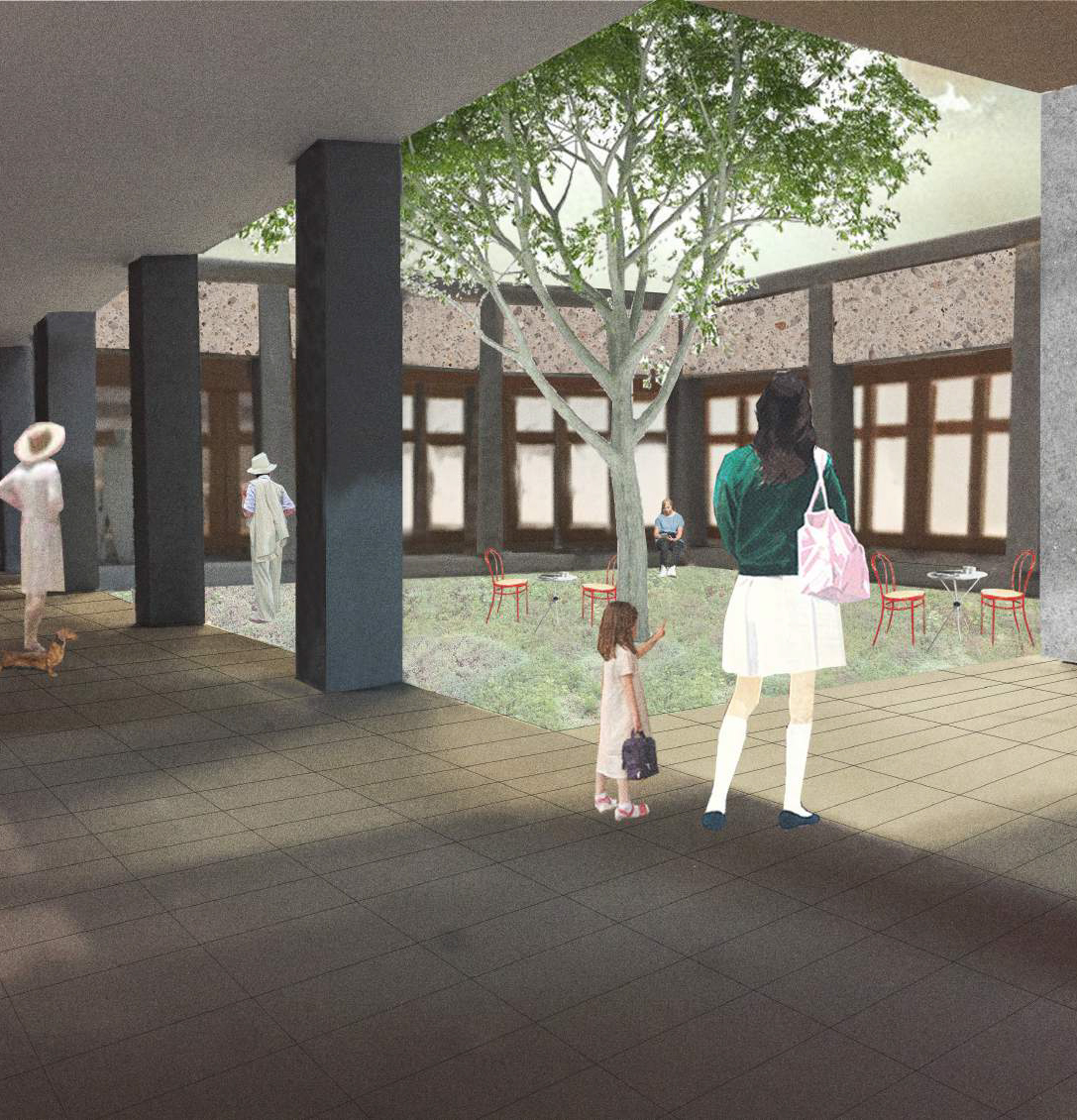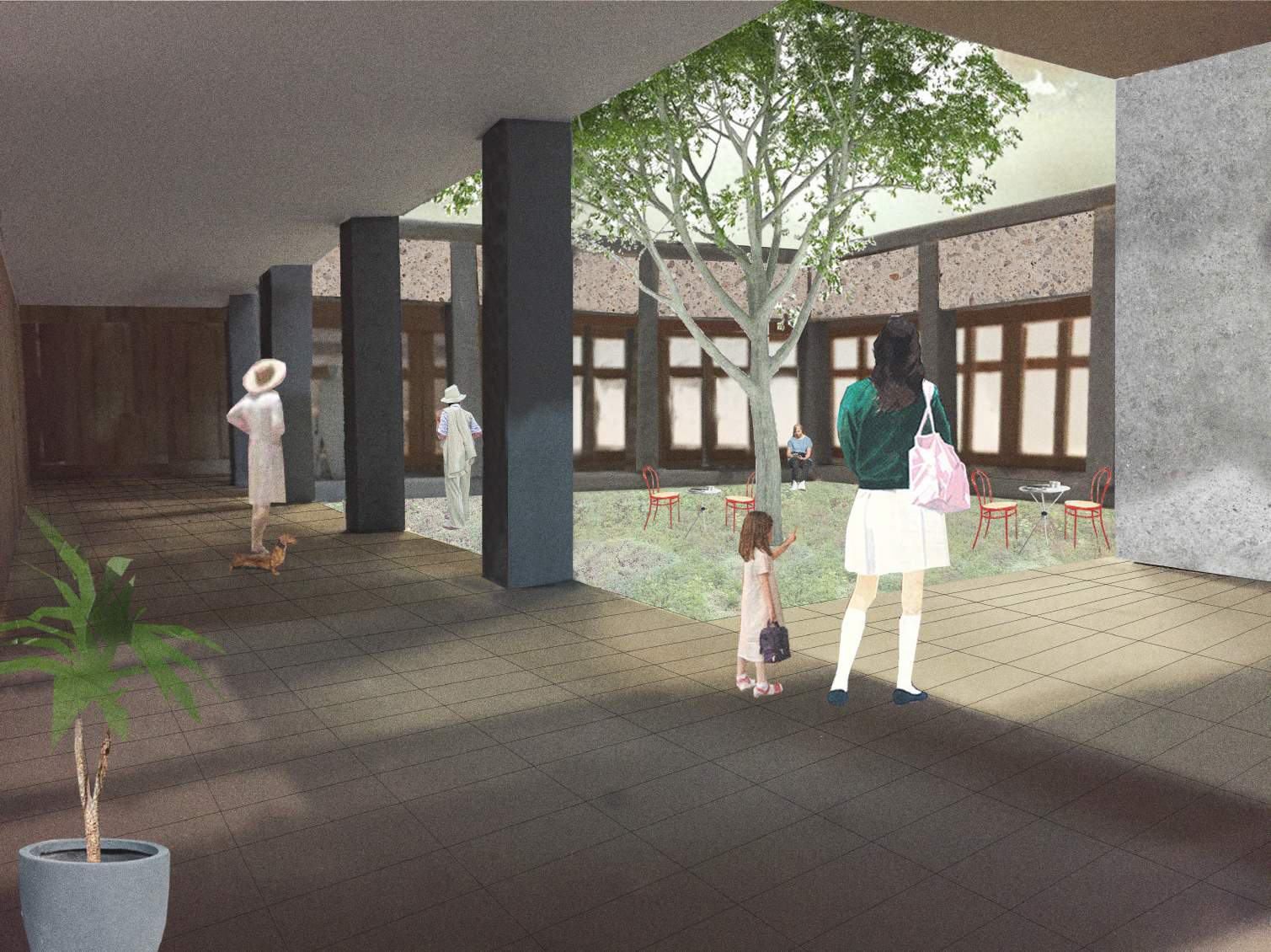Nieuwe Binnenweg


Location: Rotterdam, the Netherlands
Type: cultural centre, print workshop
Phase: project TU Delft Msc 2016
Tutors: Serge Schoenmaker, Leontien de Wit
Gross Floor Area: 4.000 m²
In its most primitive form the street is a line that connects people to places. It is an assembly of diverse people, objects and ideas. Within its everyday dimensions the street provides space for contact. Contact refines our capacities to socialise, to experiment and participate. This allows for dynamic and unpredictable processes of renewal, where existing spaces are enlivened with new ideas and overlapping practices (1).
For this project I was asked to reinterpret the site hidden behind the facades of the Mathenesserlaan and the Nieuwe Binnenweg. The given program for this site was a print workshop which also contained functions such as a shop, restaurant, auditorium and library. I found it important to develop a communal workshop that could function as an incubator for participation and experimenting resulting in a stronger neighborhood community. Therefore I introduced an 8-shaped route which attracts the pedestrian walking at the Nieuwe Binnenweg and the Mathenersserlaan to the hidden world behind the street facades. The route transforms from a roofed terrace passing the Wester Pavilion (a popular neighborhood cafe since 1900) into a part of the street pavement, stairs, alleys and bridges. Like in a cloister, a colonnade extends around a public square which visually connect the different spaces of the workshop. Existing spaces such as the two villas from the end of the 19th century at the Nieuwe Binnenweg and the secretarial school for women from 1938 at the Mathenesserlaan are enlivened with the sounds of machines producing products and people discussing how to make these products.
1. Hall, S. (2015). ‘Ordinary streets’. London: LSE Cities research project.


Nieuwe Binnenweg

Mathenesserlaan




